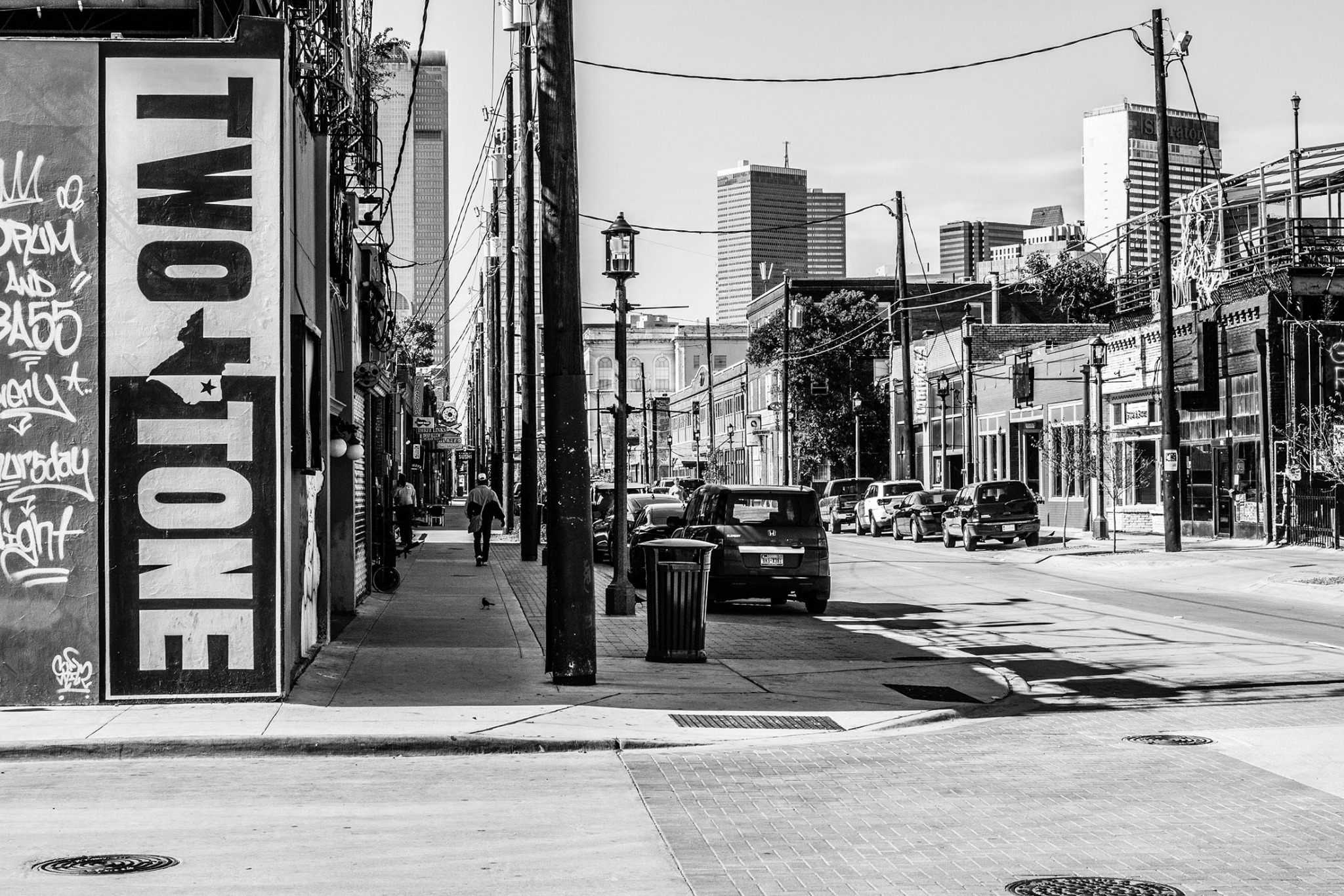Publication
On the Wrong Side of the Digital Divide

Life Without Internet Access, and Why We Must Fix It in the Age of COVID-19
Introduction
Covid-19 Changed the Digital Divide from a Problem into an Emergency
An Internet connection is critical to economic opportunity. That’s why The Greenlining Institute believes fast, reliable internet access should be a basic right, not a luxury, in today’s increasingly connected society. This has been brought into sharp relief by the novel coronavirus epidemic, forcing schools, colleges and offices to shut down and millions of students and workers to study and work from home. What constitutes an inconvenience for many becomes nearly impossible for those without a home broadband connection — made even worse by the shutting down of libraries and cafes that allowed many without home broadband to get online.
This mini-report explores what life is like for those who lack internet access.
Even in normal times, completing homework, finding a job, working from home, starting a business, making appointments, and accessing government services all require an internet connection. However, too many low-income families don’t have this critical service and are on the wrong side of the “Digital Divide,” a term used to describe the gap between those who have access to computers and the internet and those who do not. Frequently, low-income communities of color sit on the wrong side of this digital divide.
Summary of Findings:
Prior to the advent of the COVID-19 crisis, Greenlining asked residents of two California communities, Fresno and Oakland, to share their struggles with internet access and found these common themes, all of which have been made more urgent by the pandemic:
- Internet access is not a luxury
- Lack of access creates significant hurdles for everyday life
- Smartphone access is insufficient
- Internet plans designed for low-income families are inadequate
- Lack of access is a barrier to academic success
California’s Digital Divide
Nearly 22 percent of Californians are unconnected or underconnected to the internet, usually because internet access simply costs too much for too many families(1). This affordability barrier affects low-income families and communities of color the most.
- Latino households are only about one third as likely to have access to home internet as White ones(2).
- California’s wealthiest households are 16 times as likely to have access to home internet as the poorest ones(3).
22% Nearly 22% of Californians are unconnected or underconnected to the internet 21% Latino households are 21% less likely to have access to home internet than White ones.
The Greenlining Institute mapped out Internet accessibility throughout California and found that areas that were redlined by banks in the past are digitally redlined today. Internet service providers in California invest millions deploying next generation high-speed internet networks in wealthy neighborhoods while ignoring low-income communities of color.
These patterns mirror the old patterns of redlining. Redlining was the deliberate practice, carried out by both the government and the private sector, of denying loans and investment to communities of color. Though officially illegal for decades, recent investigations have found that redlining still occurs, sometimes in less overt forms.
Competition and fiber-based services are less widely available in low-income areas and communities of color, with the most severe deficits observed in census block groups that combine poverty and a large percentage of Black residents(4).


As you can see, today’s map of communities in and near Oakland lacking high-speed internet access closely resembles official redlining maps from the 1930s. Neighborhoods depicted in red have access to significantly lower quality broad brand.
- Green and Light Green: Fast internet speeds, near universal internet adoption and internet costs are inconsequential relative to household income.
- Yellow: Average internet speeds, mid to high levels of internet adoption and internet costs are reasonable relative to household income.
- Orange and Red: Below average internet speeds, low internet adoption rates, and internet access costs are a large burden relative to household income.

LIFE IN THE DIGITAL DIVIDE
INTERVIEWS WITH CALIFORNIA RESIDENTS
Greenlining interviewed California residents in Oakland and Fresno who had limited or no access to the internet to get a better picture of what life is like in the digital divide. In order to allow interviewees to speak freely and maintain privacy, we used pseudonyms if requested.

Pitch is a 16-year-old Asian American Fresno resident who lives with her parents and four siblings on a $1,700 monthly income.

Daisy is a 1 7-year-old Latina Fresno resident who lives with her parents and two brothers on a $1,600 monthly
income.

Amanda is a 28-year-old Latina Fresno resident who lives with her husband and three children on a $1,200 monthly income.

Sandra is a 19-year-old Latina Fresno resident who lives on a $2,300 monthly income.

Miss A (pseudonym) is a Black Oakland resident in her mid 60s with a disability that impairs her mobility on very tight monthly income.

Felix is a White Oakland resident in his mid 50s living by himself.

WHY WE MUST FIX IT NOW
Real Stories from the Digital Divide
1. Internet access is not a luxury
Some go into debt to have it and others cannot afford it at all
When we asked about the importance of internet access and their budgets, they told us they considered internet access a priority even when they struggled to afford it. Others noted that $15 a month is the most they could afford for home internet



2. Lack of access creates significant hurdles for everyday life
Inconsistent internet access disrupts day to day activities, forcing many to go to great lengths to get connected.



When we asked people about how inconsistent internet access affected their day to day activities, they mentioned going out of their way to obtain it, disrupting their children’s schedules and risking their safety to complete their work online.
3. Smartphone Access is Insufficient
Data caps or speed restrictions on smartphone plans mean families can’t rely on phone internet to meet their needs.
When we asked people about the limitations of their internet access through only their smartphone, they mentioned missing out on career opportunities.



4. Internet plans designed for low-income families are inadequate
Poorly-marketed programs provide inadequate service
Some low-income families can try to meet their access needs through government mandated programs like Comcast’s Internet Essentials, AT&T Access or LifeLine. However, these programs are poorly marketed, have limited eligibility and often provide families with slow, second-class service.
The average (median) internet speed in America was 72 Mbps in 2017. Research indicates that average users will need speeds of 150 Mbps by 2025. However, the majority of low-income internet plans only provide speeds of 10-15 Mbps today(5).



5. Lack of Access is a Barrier to Academic Success
Poor internet access means stress and wasted time
When we asked people about how internet access impacts their education, they mentioned that having limited internet access makes homework completion take twice as long, results in having to turn in assignments late and, for some, causes stress as they have to share a slow internet connection with a large family.
Research shows that fourth graders without home internet score 15-17 percent lower on standardized math, science and reading tests than those that have it. That gap only grows as students get older(6).




GOALS & SOLUTIONS
Policy Recommendations
These stories offer a glimpse of the significant challenges that too many Californians face when it comes to internet access — changes that have become even more urgent as the COVID-19 pandemic has pushed much work and educational activity online. Tackling these problems means California must invest in its citizens and make high-speed internet universally available and affordable. The governor’s most recent budget calls for California to provide “Broadband for All” as a way to ensure digital equity. The Greenlining Institute proposes the following three strategies to achieve this goal:
“Affordable high-speed Internet is vital to the daily lives of all Californians, such as receiving medical treatment, completing school homework, and taking advantage of emerging economic opportunities. Digital equity and inclusion – ensuring all communities enjoy the fruits of innovation – necessitates Broadband for All.”
OFFICE OF THE CALIFORNIA GOVERNOR
1. Affordable Universal Service
California should require all internet providers to market and offer affordable high-speed internet plans to low-income households. These plans should offer at least 50 Mbps speeds for $10/month to Californians earning 200 percent of the federal poverty line. Speeds should increase as usage needs grow. Greenlining supports AB 3079, because it would lower the cost of home internet service for low-income families.
2. Fiber Internet for All
California must modernize its internet connectivity by building ultra-fast “fiber” internet infrastructure statewide. This will create jobs and provide families and businesses with the internet connectivity we need to keep up with the growing demand for internet services and to remain a global leader in innovative technology. Greenlining supports SB 1130 because it would increase investment in fast, future-proof broadband networks across the state.
3. Increased Competition
Californians generally only have two internet providers to pick from, resulting in higher prices and slower speeds. As California invests in fiber internet, it should use its funds in ways that encourage cities, wireless providers, and smaller companies to compete and develop their own internet options. This would lower the cost of internet access for all Californians.
Achieving these goals will require a strong vision and bold action from all sectors of society, but taking action now is critical given the importance of the internet to economic opportunity and a stable society. Achieving an aggressive and inspired broadband vision will help families stay connected, provide economic opportunity, increase resiliency during crises, and improve the quality of life for all Californians.
Gissela Moya is the Many Garcia Technology Equity Fellow

Footnotes
- California Emerging Technology Fund, 2019 Berkeley IGS Poll: http://www.cetfund.org/files/002_CETF_2019_002_IGS_Poll_CA_Digital_Divide_ppt.pdf
- California Emerging Technology Fund, 2019 Berkeley IGS Poll:
- CONNECTED CITIES AND INCLUSIVE GROWTH (CCIG) Policy Brief # 4, September 2019 available at http://arnicusc.org/wp-content/uploads/2019/10/Policy-Brief-4-final.pdf.
- European Commission, “SWD (2016) 300, Connectivity for a Competitive Digital Single Market – Towards a European Gigabit Society,” at p. 24 (2016).
- https://nces.ed.gov/programs/digest/d18/tables/dt18_223.40.asp?current=yes; https://nces.ed.gov/programs/digest/d17/tables/dt17_221.35.asp; https://nces.ed.gov/programs/digest/d17/tables/dt17_222.45.asp; https://nces.ed.gov/programs/digest/d17/tables/dt17_602.45.asp
- California 2020-2021 Budget at page 53, available at http://www.ebudget.ca.gov/2020-21/pdf/BudgetSummary/FullBudgetSummary.pdf
